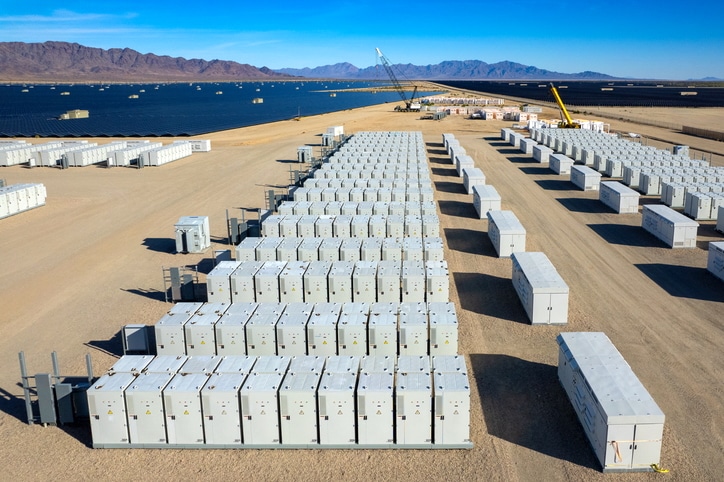This post was originally published on Eco Watch
According to a recent report from the U.S. Energy Information Administration (EIA), utility-scale battery storage capacity is quickly growing, with capacity reaching 20.7 gigawatts by July 2024 and 21.4 gigawatts as of August 2024.
In 2010, the U.S. had just 4 megawatts of battery storage capacity, and that number remained relatively unchanged until 2020. But over the past few years, battery energy storage capacity has sharply increased as a way to support electricity grids, balance out energy supply and demand to minimize outages and to store energy from renewable sources, like wind and solar, which have also been steadily increasing.
“It’s been extraordinary growth,” John Moura, director of reliability assessment and performance analysis at the North American Electric Reliability Corporation, told The Guardian. “It’s still technology that we are getting used to working with because the system wasn’t designed for it, but from a reliability perspective it presents a golden opportunity. This changes the whole paradigm of producing electricity, delivering it and consuming it. Storage gives us a bit of a time machine to deliver it when we need it.”
In the first seven months of 2024 alone, battery storage capacity increased 5 gigawatts. As of August 2024, the total utility-scale battery storage capacity reached 21.4 gigawatts, and this total does not include small-scale battery storage capacity.
As The Guardian reported, the amount of utility-scale battery storage capacity in the U.S. that has increased from 2020 to 2024 is equivalent to the energy output of 20 nuclear reactors. While batteries don’t generate energy, their ability to store generated power can help improve the resiliency of energy grids.
In the U.S., battery storage, along with solar energy, dominated the new utility-scale electricity generation capacity installed in the first half of 2024. A previous EIA report in August found that of the 20.2 gigawatts of utility-scale electric generating capacity installed from January through June 2024, solar made up 59% and battery storage made up 21% of the total.
The rapid battery storage expansion is critical for not only the U.S. but the world to meet climate goals by 2030. According to an April 2024 report by International Energy Agency (IEA), global battery rollout increased more than 130% in 2023 compared to 2022, but battery capacity expansion still needs to increase six-fold compared to current rates in order to reach net-zero energy goals by 2030.
In the U.S., utility-scale battery storage capacity is expected to double to around 40 gigawatts by 2025, if projects that are currently planned go into operation, The Guardian reported. But experts still warn that the U.S., and the world, needs to work on cutting emissions of electricity generation from fossil fuels alongside increasing renewable energy generation and storage capacity.
“There are a lot of changes happening but monstrous action is still needed if we are going to make this energy transition,” Moura told The Guardian.
The post Utility-Scale Battery Storage in U.S. Increasing Rapidly, EIA Finds appeared first on EcoWatch.





0 Comments